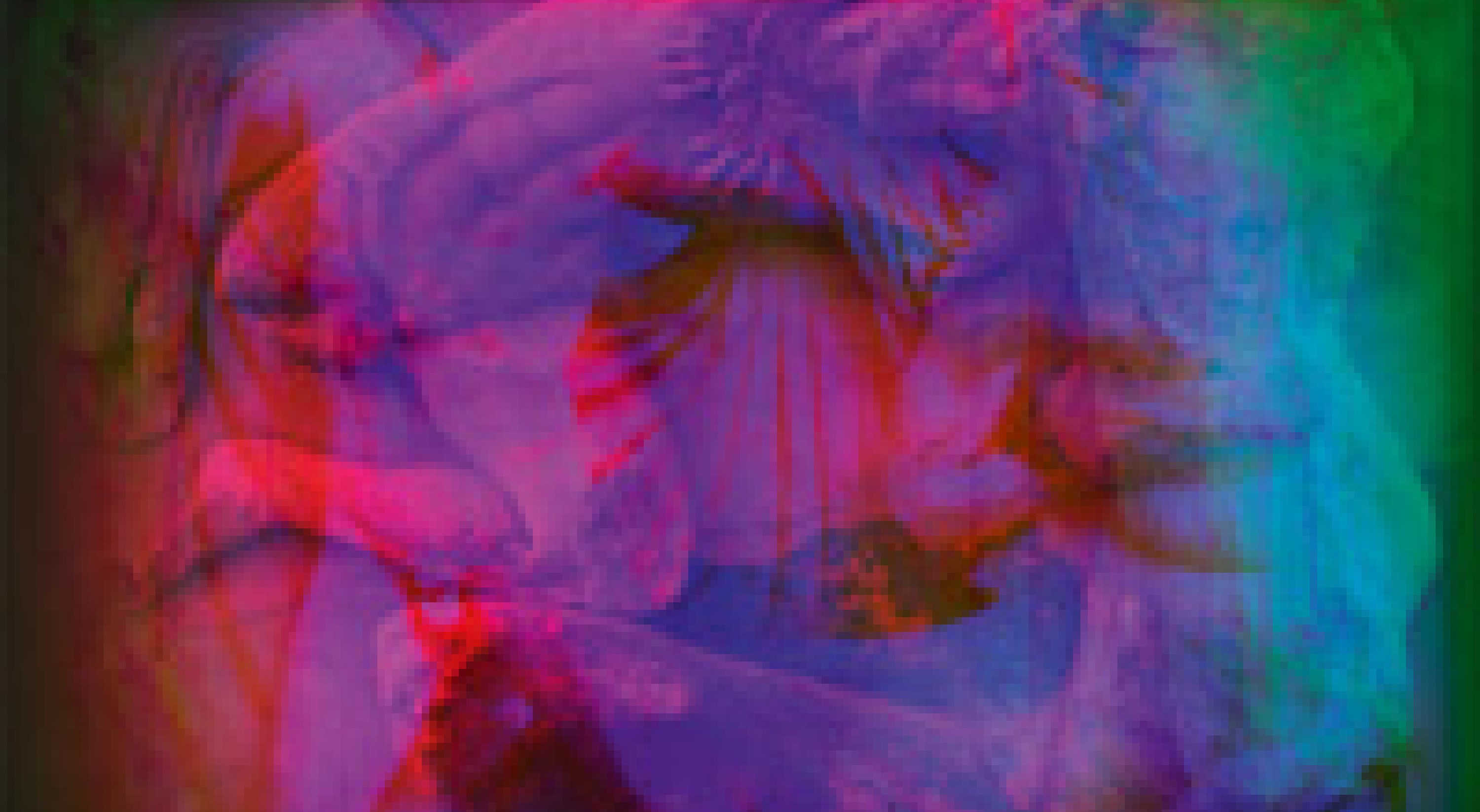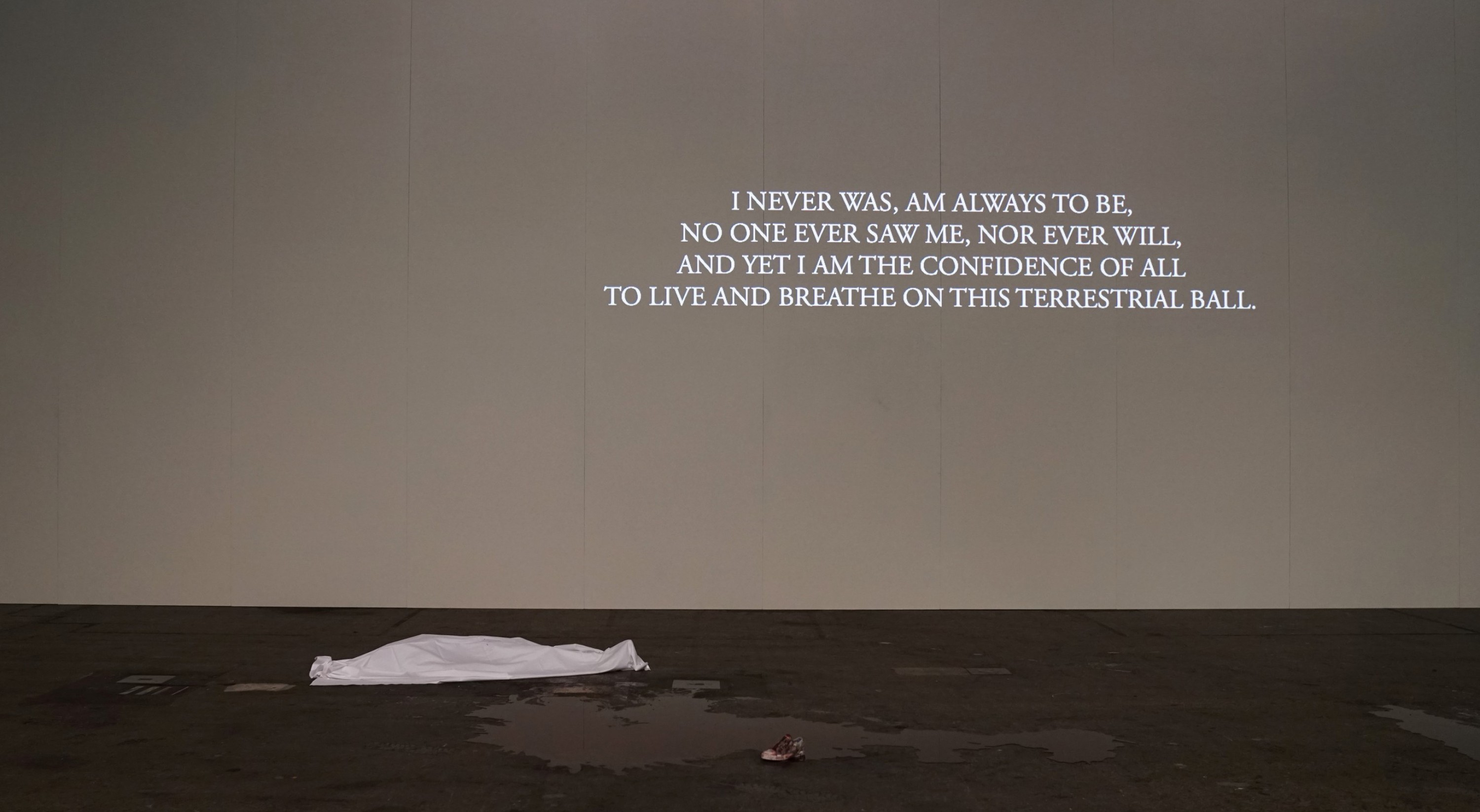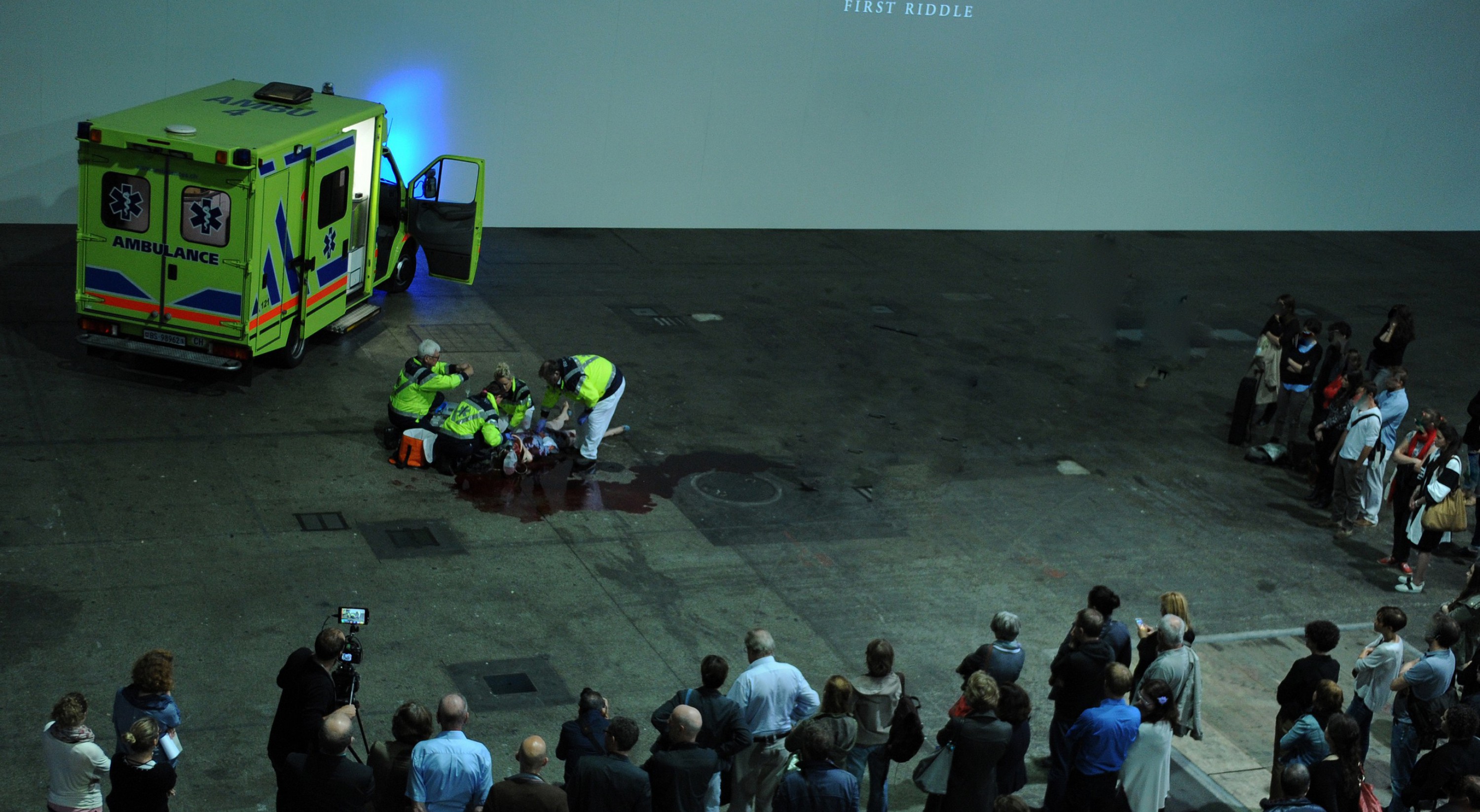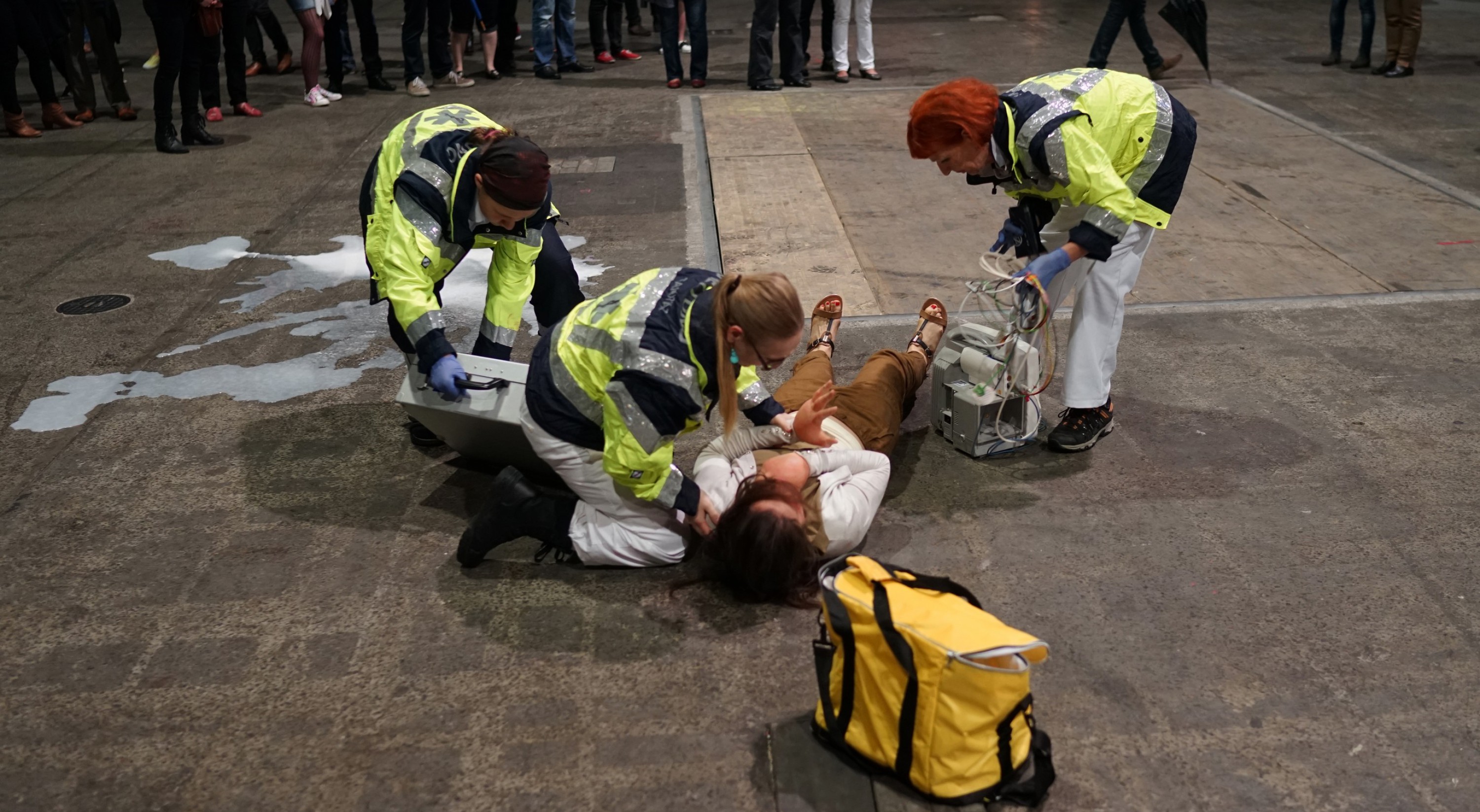Romeo Castellucci
Le Metope del Partenone
novembernov 23 – 29
Directed, stage, lighting, and costume design by Romeo Castellucci
Music, Scott Gibbons
Riddles, Claudia Castellucci
With Urs Bihler, Silvia Costa, Dirk Glodde, Zoe Hutmacher, Liliana Kosarenko, Maximilian Reichert
Artistic collaboration, Silvia Costa
Special effects, Giovanna Amoroso et Istvan Zimmermann
Production Assistance, Miriam Coretta Schulte
Costumes Assistance, Elisa Thönen
Associate production, Theater Basel // In coproduction with Socíetas Raffaello Sanzio ; La Villette-Paris ; Festival d’Automne à Paris // In collaboration with Socìetas Raffaello Sanzio // In partnership with La Villette-Paris ; Festival d’Automne à Paris // First performed on 16 June 2015 at Art Basel (Basel)
In association with France Culture
According to Romeo Castellucci, the Parthenon Friezes (Le Metope del Partenone) represent nothing else than “battles for life”. In composing his own “stage friezes”, the Italian director situates the piece in the context of an appalling accident, of unknown causes, and which has plunged its victim into a life and death situation. Only the speed and efficiency of the aid on hand can shift the balance between successful outcome and dire consequences. Six accidents follow on from each other, forming six tableaux of a city, six states of pain, and six possible friezes. The fictional element of each accident, in which the victim is played an actor, will be countered by an authentic medical team, different each time. Thus, members of the audience, who have come to watch a show, quickly find themselves in the position of gaping onlookers, their curiosity aroused by a bit of blood and guts. Each of the six “friezes” becomes “like an emergency scene” in which different centuries, shapes and forms collide with each other, on the border between what Romeo Castellucci considers as the artistic heights of the century of Pericles, the friezes of the temple of temples, and the coarseness of an American television series. Each accident will be punctuated by the on-screen projection of a series of “riddles”, like the enigmatic phrases we encountered in Go Down, Moses. The effect on the spectators will be that of making them hover between the sensation of the horrors they have just witnessed and the intellectual demands of decrypting what they cannot not read. So the question is, who matters most hot or cold?
In the same place




